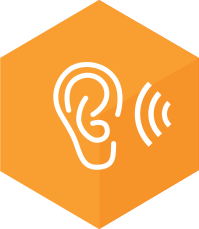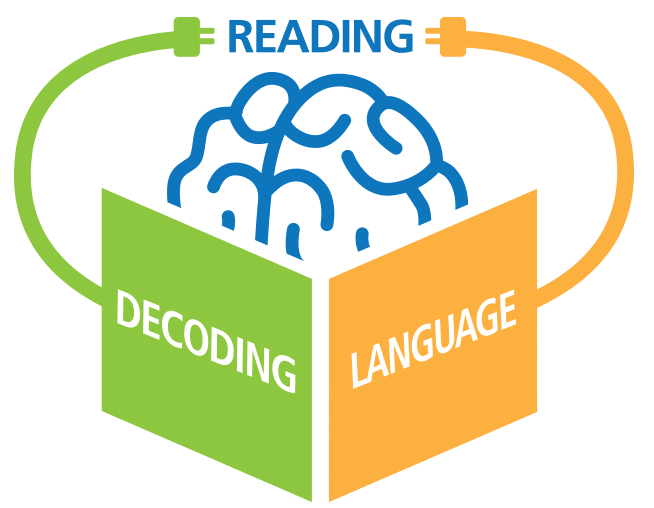[vc_row][vc_column][vc_empty_space][/vc_column][/vc_row][vc_row][vc_column][vc_column_text]
Narrative Language Measures (NLM) subtest
The CUBED assesses a variety of literacy skills in the context of narratives, which are highly relevant for school assessment and instruction. The Narrative Language Measures (NLM) includes two measures, the NLM Listening and the NLM Reading. The NLM Listening and NLM Reading use personal-themed narratives to assess oral language, reading comprehension, and decoding fluency. In the NLM, students are asked to listen to or read a brief story, and then retell that story to the examiner. Administration and scoring is done in real-time. To the extent possible, these levels are based on developmental patterns of, and curriculum expectations for narrative structure, language complexity, and decoding skills. For benchmark assessments, students are administered the NLM grade level that corresponds with their grade. For progress monitoring, any grade level can be administered to any student according to current level of performance.
[/vc_column_text][/vc_column][/vc_row][vc_row][vc_column][vc_column_text]
Why the emphasis on language?
Most U.S. students do not understand grade level reading material. To battle this, there has been a primary focus on students’ decoding ability. This is only part of the picture. Only 20% of students need targeted decoding support but 60-80% of students would benefit from an increased emphasis on language. Informed by extensive empirical research, the CUBED represents advancements in language assessment that allows educators to accurately, reliably, and efficiently measure all critical dimensions of literacy: Decoding, language, and their product, reading comprehension.[/vc_column_text][/vc_column][/vc_row][vc_row][vc_column][vc_column_text]
The NLM offers a valid measure of comprehension
Other tests on the market claim to assess comprehension but use faulty measures that produce inaccurate results. CUBED accurately and reliably assesses comprehension through listening and reading retells from the NLM subtests. Comprehension questions probe students’ vocabulary and interference skills. Scores are compared to benchmark standards for screening and tracking progress over time.
[/vc_column_text][/vc_column][/vc_row][vc_row][vc_column][vc_column_text]
Measure progress with confidence!
Each story within grade level has the same story grammar construction and complexity, the same number of words, the same number, type, and position of adjectives and adverbs, the same number of non-overlapping tier-2 (less common) words, the same number of additive, adversative, and temporal coordinating conjunctions, the same number, type, and position of temporal and causal subordinate clauses, the same number of appositives, the same Lexile score range, and a similar MLU. What does this mean for you? Accuracy when measuring student progress over time![/vc_column_text][/vc_column][/vc_row][vc_row][vc_column][vc_column_text]
Details of the NLM Subtest of the CUBED

 NLM Listening Measure. The Narrative Language Measures Listening measure assesses a student’s ability to comprehend and produce complex, academic language. Reading comprehension and language comprehension are foundationally the same construct, thus, oral language comprehension can be used as a proxy measure for reading comprehension. The NLM Listening measure assesses a student’s ability to comprehend and produce complex language that is reflective of written language. Students are asked to listen to a brief narrative, and then retell that narrative. Narrative retells incorporate listening comprehension, cognition, memory, and expressive language skills. Scoring takes place in real-time. Additional sections of the NLM allow for the examination of story grammar comprehension and inferential word learning or word use. A personal story generation can also be elicited to monitor a student’s expressive language.
NLM Listening Measure. The Narrative Language Measures Listening measure assesses a student’s ability to comprehend and produce complex, academic language. Reading comprehension and language comprehension are foundationally the same construct, thus, oral language comprehension can be used as a proxy measure for reading comprehension. The NLM Listening measure assesses a student’s ability to comprehend and produce complex language that is reflective of written language. Students are asked to listen to a brief narrative, and then retell that narrative. Narrative retells incorporate listening comprehension, cognition, memory, and expressive language skills. Scoring takes place in real-time. Additional sections of the NLM allow for the examination of story grammar comprehension and inferential word learning or word use. A personal story generation can also be elicited to monitor a student’s expressive language.

 NLM Reading Measure. The NLM Reading assessment is designed to measure decoding fluency (rate and accuracy), reading comprehension, and writing. There are reading passages for first grade, second grade, and third grade. First grade reading fluency passages have a Lexile score of 300 within approximately the first 75 words. The entire first grade reading passages have a Lexile score of 500-510, similar to the NLM Listening passages described above, with a mean MLU of 9.05. Second grade reading fluency passages have a Lexile score of 500 within approximately the first 90 words. The entire second grade reading passages have a Lexile score of 590-610, also similar to the second grade NLM Listening passages, with a mean MLU of 9.61. The third grade reading fluency passages have a Lexile score of 600 within approximately the first 115 words. Just like the third grade NLM Listening passages, the entire third grade NLM Reading passages have a Lexile score of 750-770, with a mean MLU of 12.04.[/vc_column_text][/vc_column][/vc_row]
NLM Reading Measure. The NLM Reading assessment is designed to measure decoding fluency (rate and accuracy), reading comprehension, and writing. There are reading passages for first grade, second grade, and third grade. First grade reading fluency passages have a Lexile score of 300 within approximately the first 75 words. The entire first grade reading passages have a Lexile score of 500-510, similar to the NLM Listening passages described above, with a mean MLU of 9.05. Second grade reading fluency passages have a Lexile score of 500 within approximately the first 90 words. The entire second grade reading passages have a Lexile score of 590-610, also similar to the second grade NLM Listening passages, with a mean MLU of 9.61. The third grade reading fluency passages have a Lexile score of 600 within approximately the first 115 words. Just like the third grade NLM Listening passages, the entire third grade NLM Reading passages have a Lexile score of 750-770, with a mean MLU of 12.04.[/vc_column_text][/vc_column][/vc_row]


